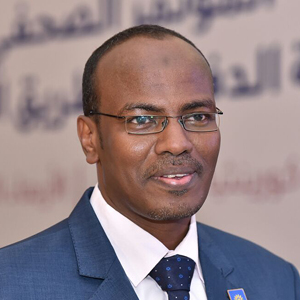Industry Thought Leadership
Towards Digital Transformation
March, 2017Recent advances in digital technologies are bringing about significant and extraordinary changes in many aspects of our social and economic lives. Digital technologies are considered to be combinations of information, computing, communications, and connectivity technologies, such as social media, mobile devices, analytics, and cloud computing. These consumer-driven technologies have become central to every workplace and home, having become a part of our daily routines; essentially, fundamentally changing the way we communicate, participate in the digital world, and conduct ourselves socially and commercially.
So before we answer the question above, let us talk about consumer behavior and reflect on the needs of humans, which keep changing. A couple of years ago, one of the lifestyle trends was only about availability of things. Taking mobile services as an example we found that it’s only about communications using voice calls or short message service (SMS). After a while MNOs in partner ship with third-party contents provider(CPs) developed new services called value added services (VAS) that colored customer’s lives including entertainment and deferent, targeted multi-media content. Subsequently, with the growth of smart phones and tablets telecom operators and service providers started developing more digital services that satisfied customer’s needs and wants. By the time these new services grew and created new revenue streams, their impact on other traditional services (Voice, SMS etc.) from perspectives of usages and revenue became visible.
With regard to technology-driven transformation, a shift concerning people’s interactions with digital products is taking place, moving from evaluating performance to researching experience. This change is partially due to increased connectivity, mobility, and domestication of digital products and services, which reflects the increasing relevance of digital devices in our lifestyle, and how people choose to express their identities. New digital services (e.g., M-Health, E-Learning, Mobile Money, IoT etc.) are contributing greatly to our lives.
There are some dimensions for describing a technology-driven transformation that are:
- The new processes
- The user experience
- Change in relationships
- Change in markets
- Creation of new organizations
- Change in the amount of customers
- Disruptive impact
A technology must impact three or more of these dimensions in order to be classified as transformational. The dimension of change in processes was given considerable attention in the development of process virtualization theory, which describes the transition from a physical process to a virtual one in which the physical interaction between people and/or objects has been eliminated (e.g., electronic commerce, online distance learning, online banking). Process virtualization can be compared to the phenomenon of digitizing, i.e., the technical process of transforming analog signals into a digital form. Furthermore, the phenomenon of digitization has recently been discussed in the context of digital transformation in applied managerial literature, where digital transformation was defined as “the use of new digital technologies (social media, mobile, analytics or embedded devices) to enable major business improvements (such as enhancing customer experience, streamlining operations or creating new business models.
Due to technology revolution and its impact on the daily life, transformation is must, so most of the services and products have to be introduced in a modern way in its shape and the way they are delivered to the beneficiaries and end users as well.
So to achieve this digital transformation first of all it has to respond and enhance the customers experience and maintain it in a better way not just for making users happy but also it becomes important for the providers of the services to survive in today’s tough competition markets and changing business world. Also things have to be considered in implementing deferent digital services that are:
- Market segment
- Availability and continuity of the services
- Security
Also the main stakeholder’s accountabilities and roles have to be stated very clear before start the journey of transformation. stakeholders might essential to be addressed:
- The government
- The regulatory bodies
- The operators and ICT providers
- The beneficiaries
Sudatel Telecom Group (STG)’s contribution in forming digital transformation in Sudan is vital due to infrastructure that STG owns, in addition to wide experience in developing services and products, which are leading to achieving digitization.
With a vision to be the leading ICT provider in the region Sudatel developed a lot of services and has planned for full transformation by 2020 in deferent areas such as E-Learning, e-health, mobile money, M2M, IoT, and cloud computing, etc.
Sudatel, as a part of its digital transformation portfolio, has introduced mobile financial services to achieve digital financial inclusion. Sudatel launched its mobile money services in collaboration model with central bank of Sudan under brand name Gorooshi.
Gorooshi service provides many services to end user such as money transfer p2p, settle invoices and top-up for telecommunications, payments for government services, purchase and payments of utilities etc.
Gorooshi is available with two options for interact with the customer:
- USSD for all types of mobile phones include even feature phones
- Mobile App for smart phone users and tablets.
These two options allow high-value customers and low-value customers as well to benefit from this service.
Also Sudatel launched its local store for android applications under brand name Sudan Store which allows developers and designers of mobile apps to upload their applications in local store with high standards criteria lead for reachability and accessibility for the local users to download the favorable apps very easy, an example for these apps, is Natigaty app, which provides the result and details for the Sudanese students’ secondary and primary certificates.
Finally, the needs of digital transformation become very crucial and it is s a main driver for every country’s development, consumer’s satisfaction and prosperity of life. With digital transformation, new digital possibilities can be created to elevated the socio-economic activity of a nation. In Sudan, Sudatel is walking this path, and we aim to make even bigger things happen for our customers and for the Sudanese citizens.

